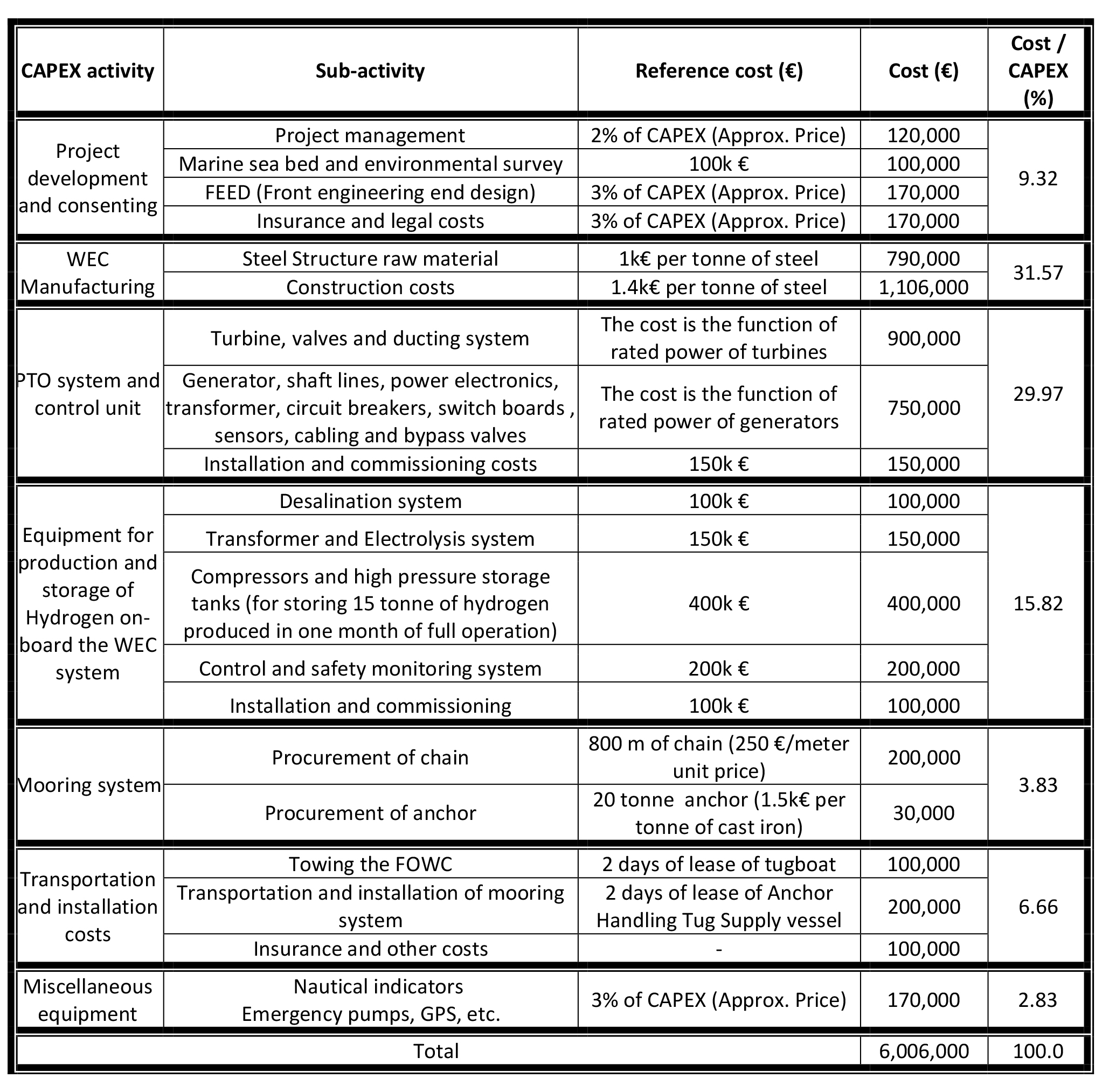Affordability

The summary of the CAPEX costs for 1 Megawatt (Rated Power) of FOWC installed in the offshore area (with the mean annual wave power density of 50-70 kWh/m and 200 m water depth) located 50-200 km from the coastline is summarised in the following table. The length, width, draft, height above water level and steel structure of the device has the following values: 40 m, 20 m, 12 m, 8 m and 790 tonnes, respectively. The produced energy could be transmitted by cable or stored on-board the device by producing Hydrogen. Hence, this WEC device can be used as the clean fuel supplier for the future ocean going ships that should reduce their emissions according to the strict rules of IMO (International Maritime Organisation). The produced hydrogen can also be carried out by Hydrogen carrier vessels to be used in the shoreline. Hence, the corresponding costs for the underwater cable and its installation as well as the required electrical infra-structures are eliminated that may cause certain reduction in the CAPEX costs. By assuming the OPEX cost would be around 6 M€ within the 20 years of operational life of the system (and as the CAPEX value is estimated to be around 6 M€), the device would be able to produce energy (check Note 2 in below) with the cost of around 0.12-0.14 €/kWh, that can provide hydrogen on-board the device with the price 5-7 € per kg, which is a competitive price for the green hydrogen according to the current market.
Note 1: The OPEX costs of this WEC technology is expected to be lower compared to other existing designs of WECs as (1) no moving PTO parts exists in underwater, so the maintenance operation does not require specific facilities (like ROVs) and complex supply vessels and (2) the hull structure and mooring system design of the device follows the available standards for the ships that have high reliability levels which requires less inspection and maintenance processes.
Note 2:The wave to wire efficiency of the system is estimated to be around 50% in random waves (according to the physical test data) that allows the FOWC to produce up to 6 GWh energy per annum (120 GWh in 20 years) in the specified installation site.
